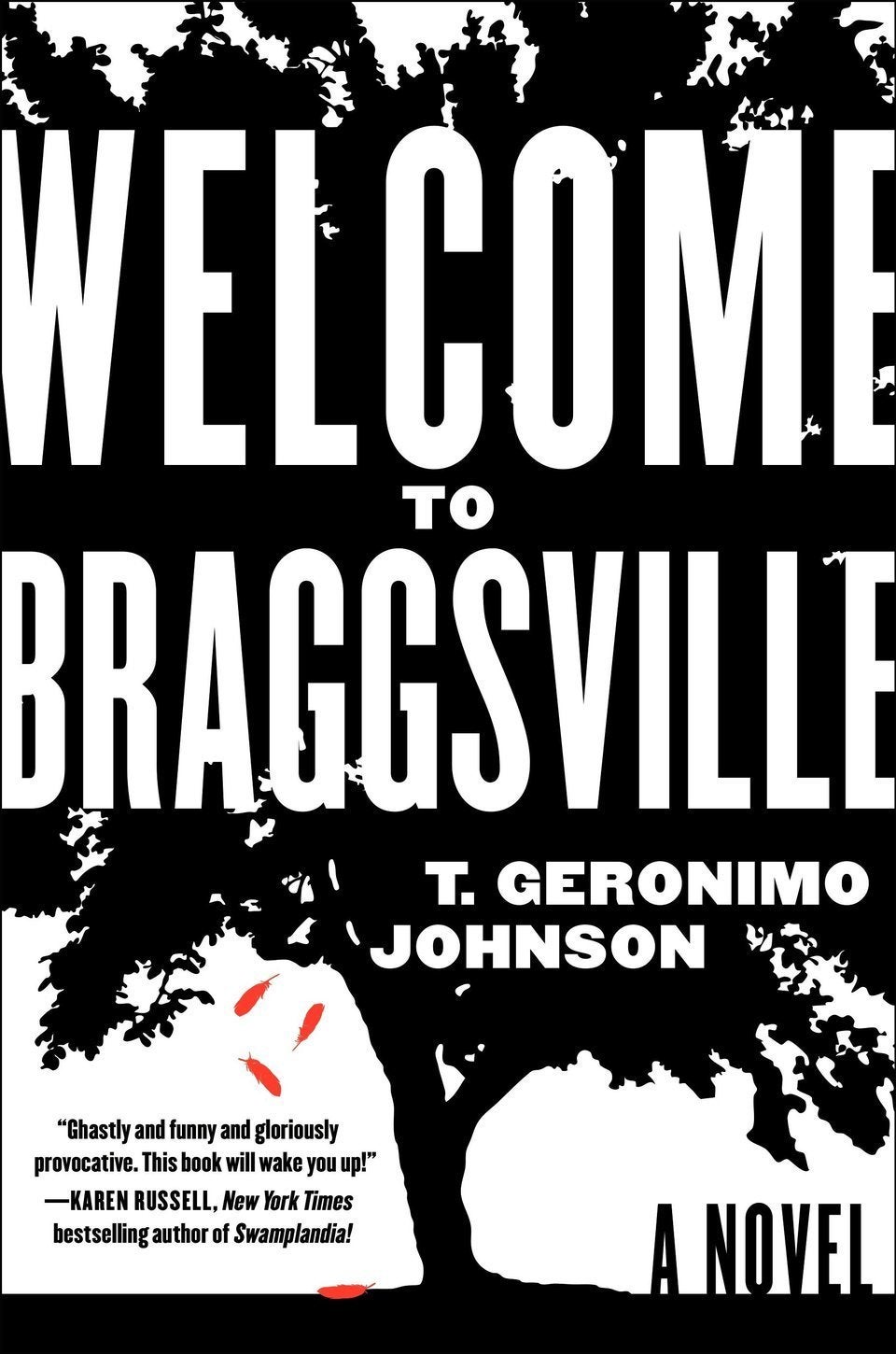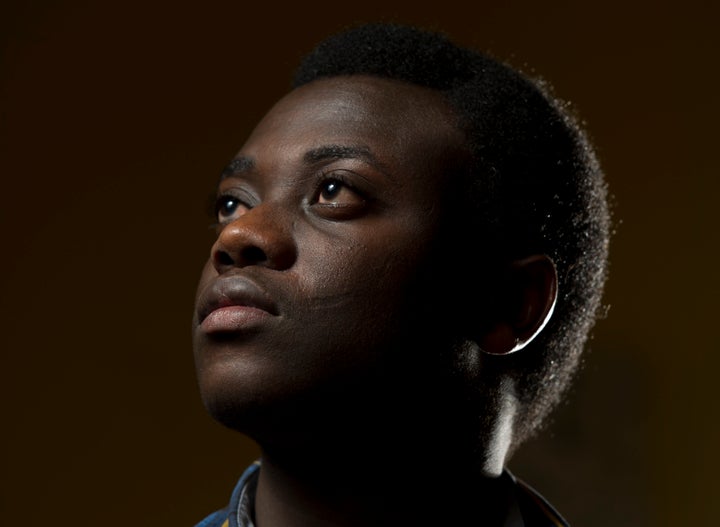
Michel Chikwanine was 5 years old when rebel militiamen kidnapped him from a soccer field near his school in the Democratic Republic of Congo. He had decided to stay out to play rather than follow his father's instructions to head straight home. As the fighters approached his group of friends, he was more concerned about having disobeyed his dad than about what the men would do.
Chikwanine's life would quickly and irreconcilably change, however, as the militia abducted the boys and took them to its camp. There, a fighter drugged him with a mix of cocaine and gunpowder. Chikwanine was blindfolded and made to hold a gun, then told to shoot it.
"I was forced literally to kill my best friend as an initiation process into the army," Chikwanine told The WorldPost. "That’s something I will never forget, and I still fight with every single day."
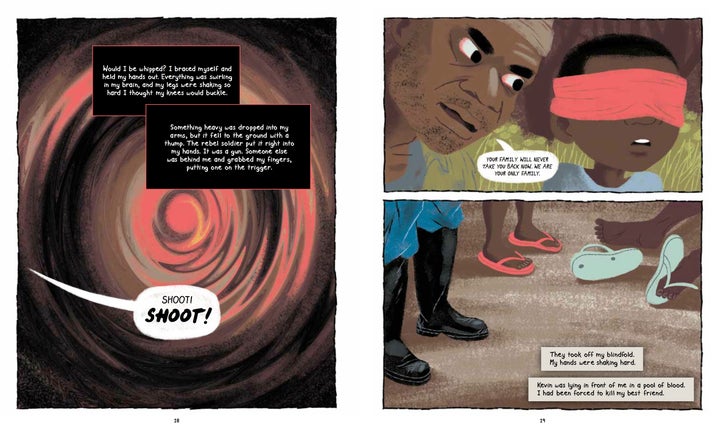
Chikwanine spent weeks as a child soldier with the group before he managed to escape and find his way back home through the help of townspeople who knew his family. He later escaped the conflict to a displaced persons camp in northern Uganda, and in 2004 made it to Canada as a refugee with his mother and younger sister.
Now 27, Chikwanine has written about his experiences in a graphic novel released this month that's aimed, perhaps counterintuitively, at 10- to 14-year-olds.
Along with co-author Jessica Dee Humphreys and illustrator Claudia Davila, Chikwanine has created Child Soldier: When Boys and Girls Are Used in War, a work he hopes will give young people greater context and awareness of the use of children in war.
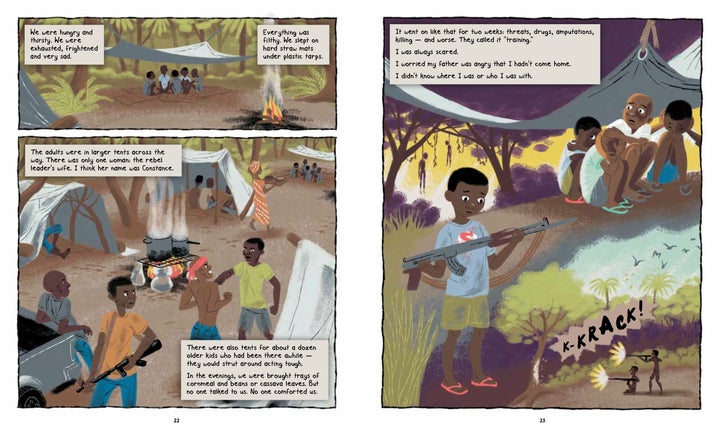
The novel recounts Chikwanine's story, but also gives a wider look into the conditions that led to the conflict that consumed a large part of his life and millions of others.
After the Rwandan genocide in 1994, millions of the country's ethnic Hutu population -- many of whom had participated in the campaign against the ethnic Tutsis -- fled into eastern DRC. Once there, Hutu extremist groups attacked Tutsis within the nation and threatened further attacks on Rwanda.
Rwanda responded by supporting a Tutsi-led rebel campaign that toppled longtime Congolese dictator Mobutu Sese Seko while also committing horrific abuses against the populace and Hutu refugees. But DRC's newly installed rebel leader-turned-president, Laurent Kabila, turned against his former Rwandan allies once in power.
In 1998, Kabila's government and Rwandan-backed rebels started warring over who would control DRC. The conflict also involved a number of regional powers backing different sides and plundering the nation's natural resources.
Chikwanine's book looks at the DRC's history and its brutal legacy of colonialism, and includes resources to find out more about child soldiers -- all of which Chikwanine said were necessary to show that such atrocities do not happen in vacuum.
"I wanted to change the narrative of conflict and war, especially for young people," he said, adding that he hopes to separate his work from Western depictions of African nations that remove nuance and humanity of their history.
"When we talk about Africa, or any other part of the world, it’s always talked about in headlines," he said. "Africa has a very stereotypical mention of being very violent and poor, but we forget to mention the context of the conflict and the poverty. It leads people to conclude the very stereotypical idea of what Africa is, and that’s not what it is."
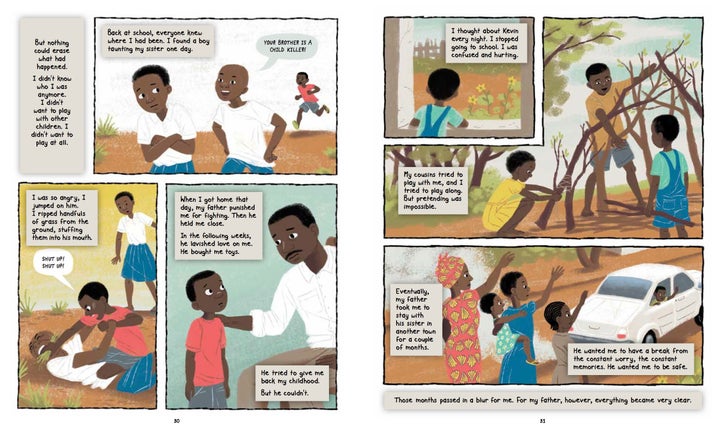
Chikwanine returned to the relative safety of his home after being abducted, but his family saw more suffering in the years to come. The rising instability and violence in DRC descended in the late 1990s into a civil war that killed over 5 million people and brought more attacks against Chikwanine and his family. His father, a human rights activist, was tortured and ultimately assassinated after fleeing the country, while his sisters and mother survived sexual violence.
Chikwanine said he wants to increasing children's understanding of the world, as well as to increase an opportunity for them to have a dialogue with adults about issues of social justice.
"Sometimes, as adults, we shy away from having conversations with our own young people, but every day in the world a young person sees atrocities that are happening," he said. "It’s important to start having conversations with young people, to engage them in that way if we want them to grow up to be engaged citizens in society."
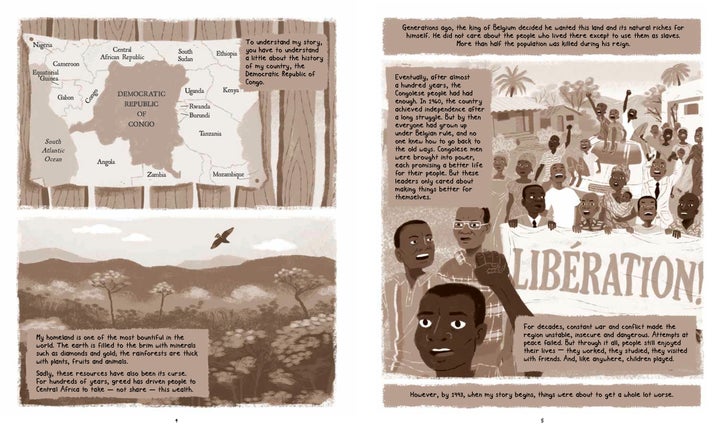
In recent months, Chikwanine has spoken out on the worldwide refugee crisis and how governments should do more to support aid programs and embrace people fleeing conflict. As someone who arrived in Canada as a refugee, he has criticized how people and politicians who haven't experienced war have dismissed the needs of people seeking asylum.
"When we see conflict on the news it’s a headline, but for many people that was life and reality and it was hurtful," Chikwanine said. "To see other human beings going through difficult situations like that, it's one of the hardest things to watch."
Chikwanine is currently a student at the University of Toronto, and after graduation he hopes to turn his focus to promoting education and shifting policy in African nations. He is also involved in The Child Soldiers Initiative, which seeks to prevent the use of children in war, and speaks publicly on child's rights.
"It’s never been easy to tell my story," Chikwanine said. "As any person who has been through conflict will tell you, it’s not easy to stand up and tell people some of the most difficult moments of your life, but it is necessary."
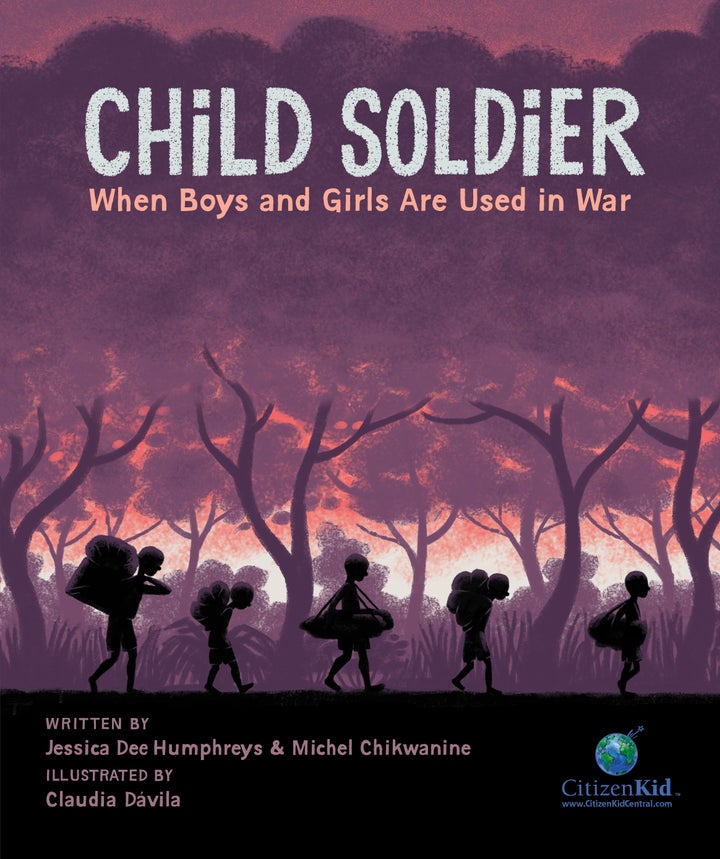
Also on HuffPost:

